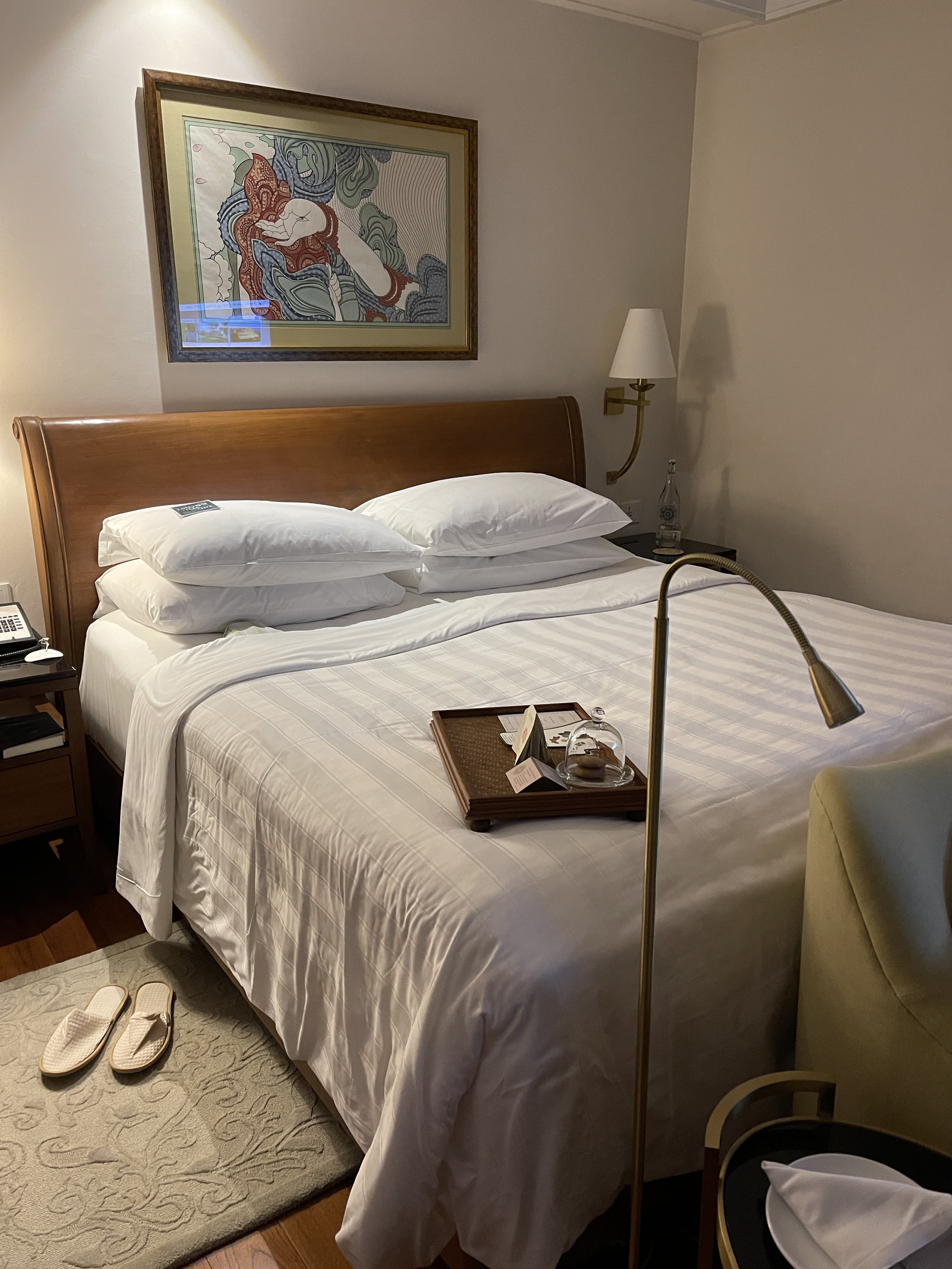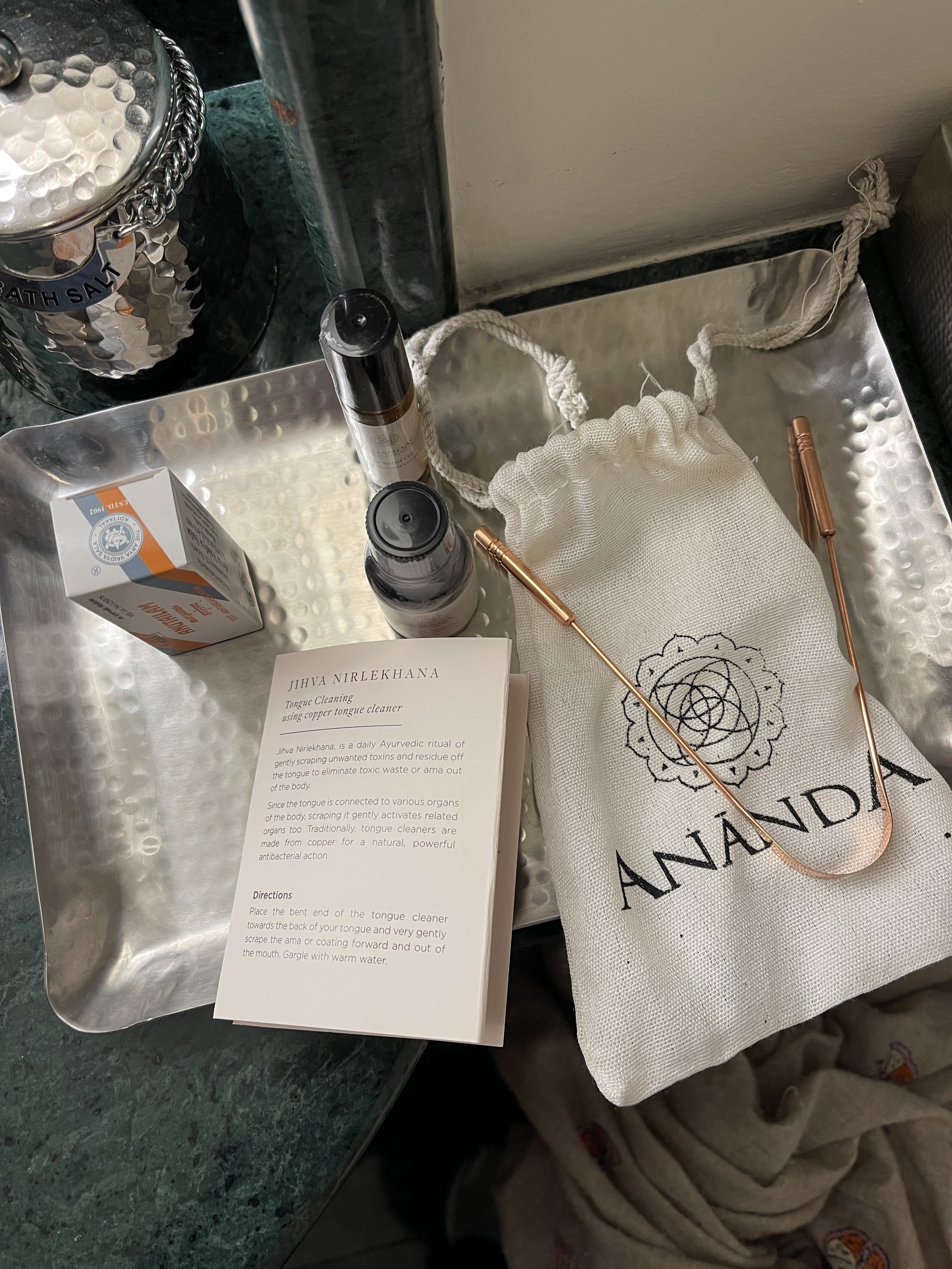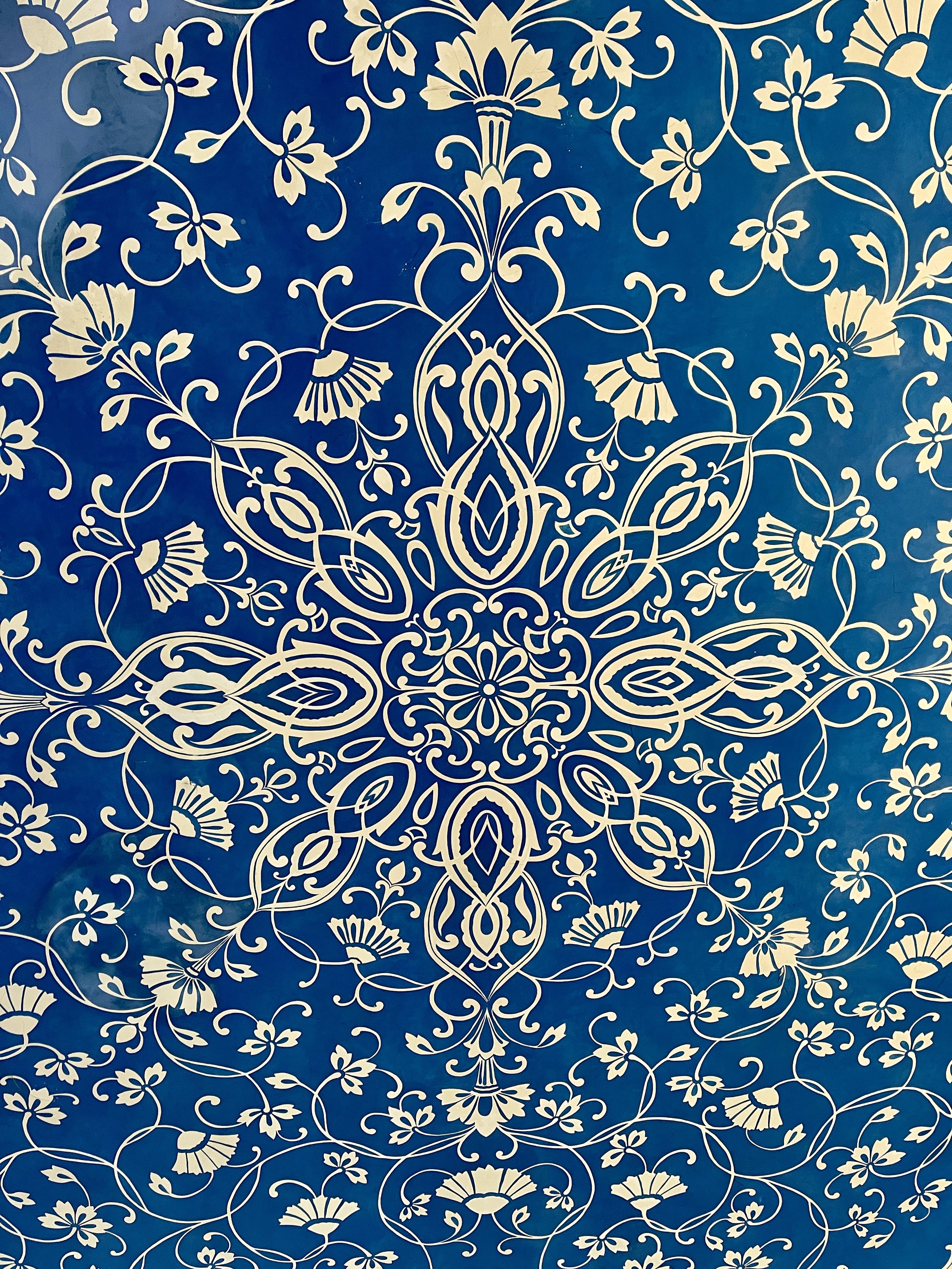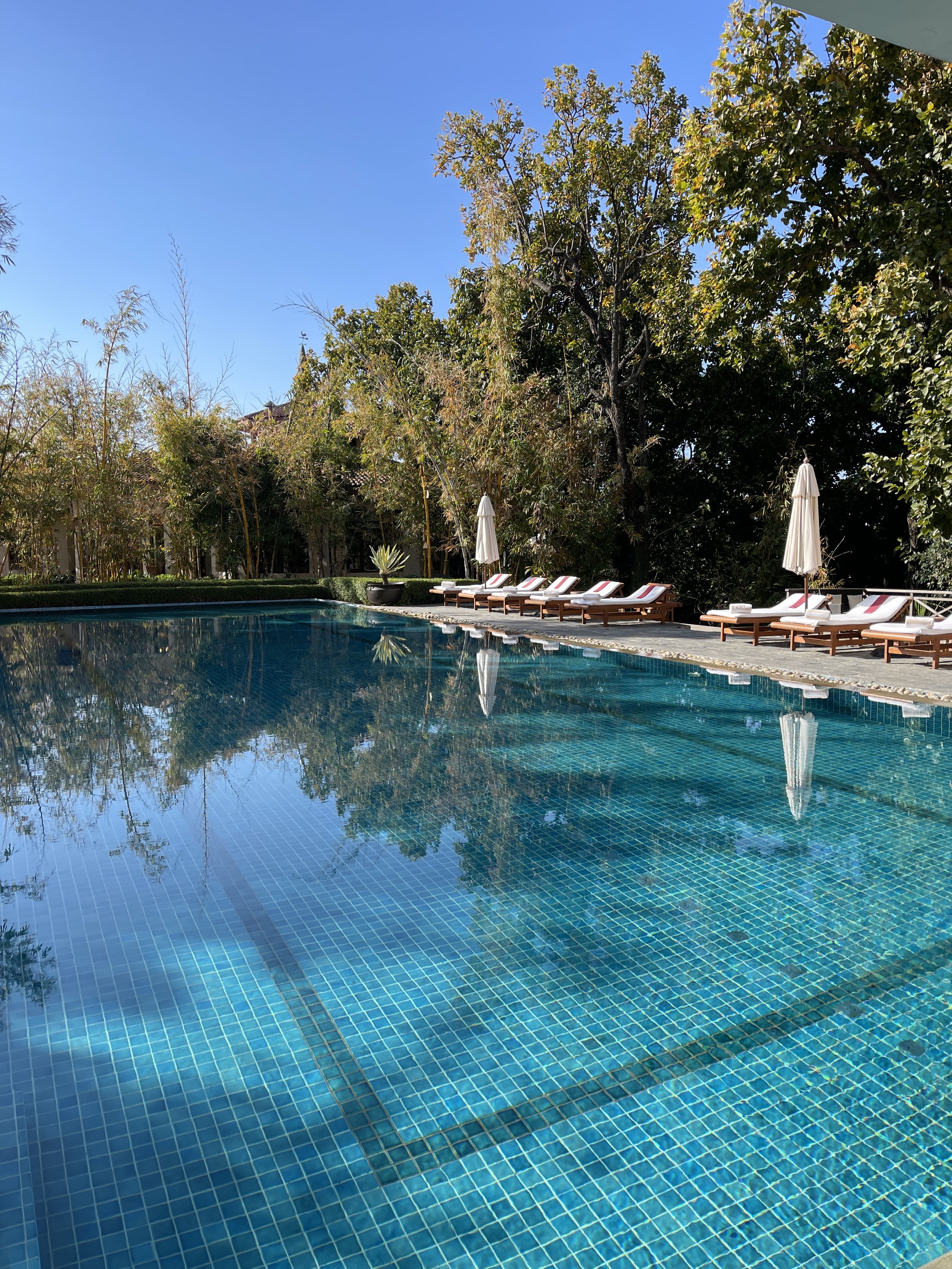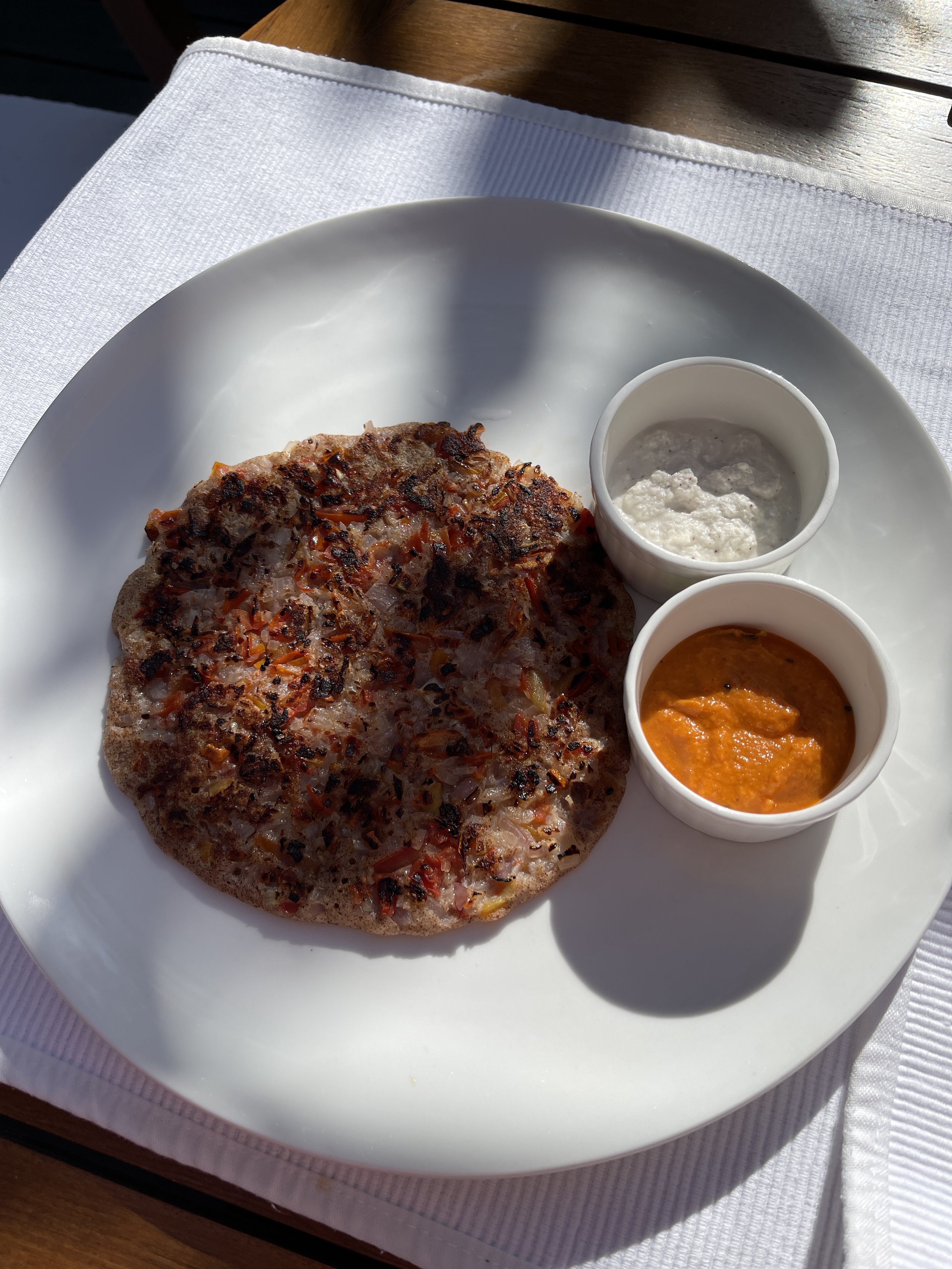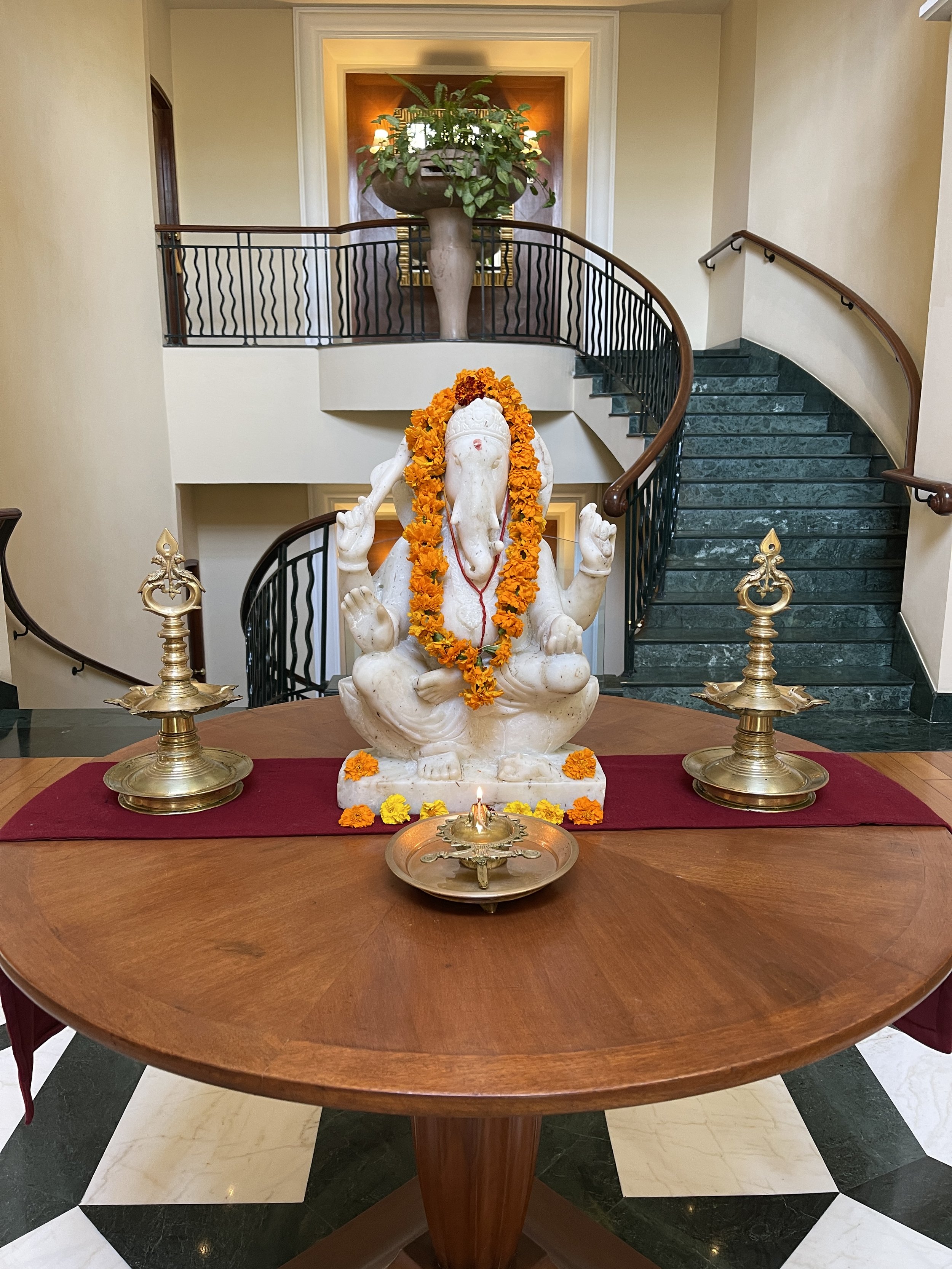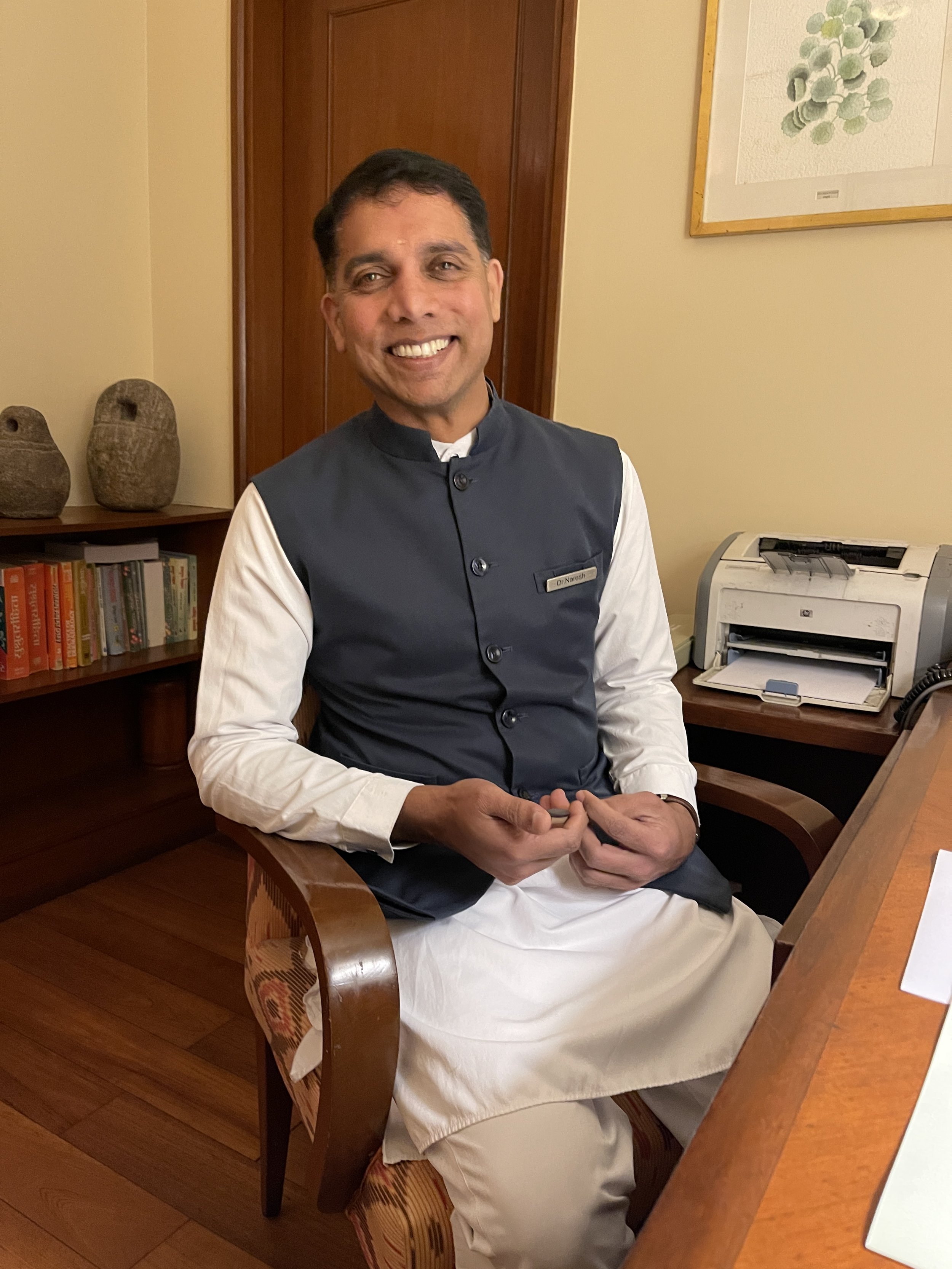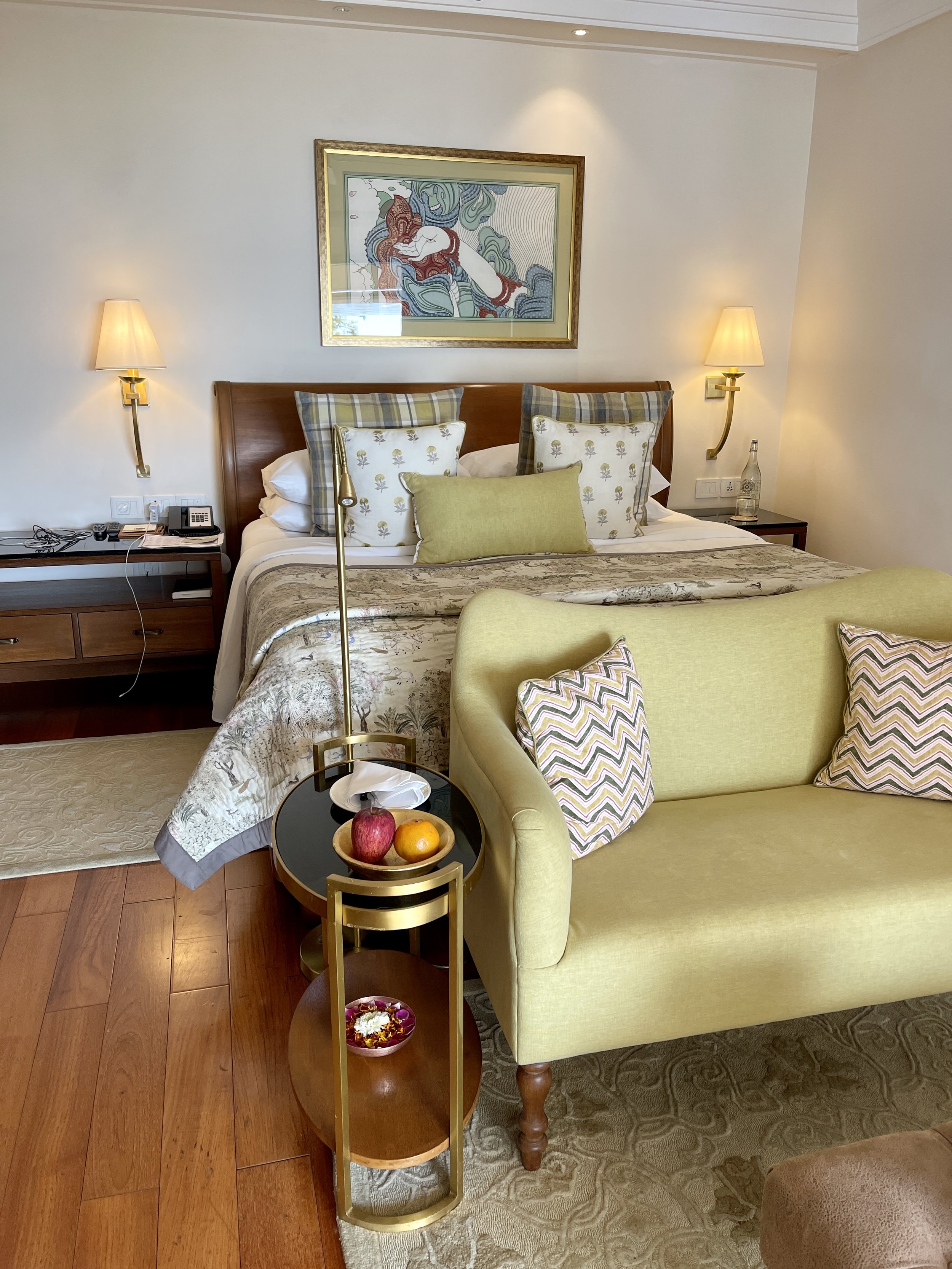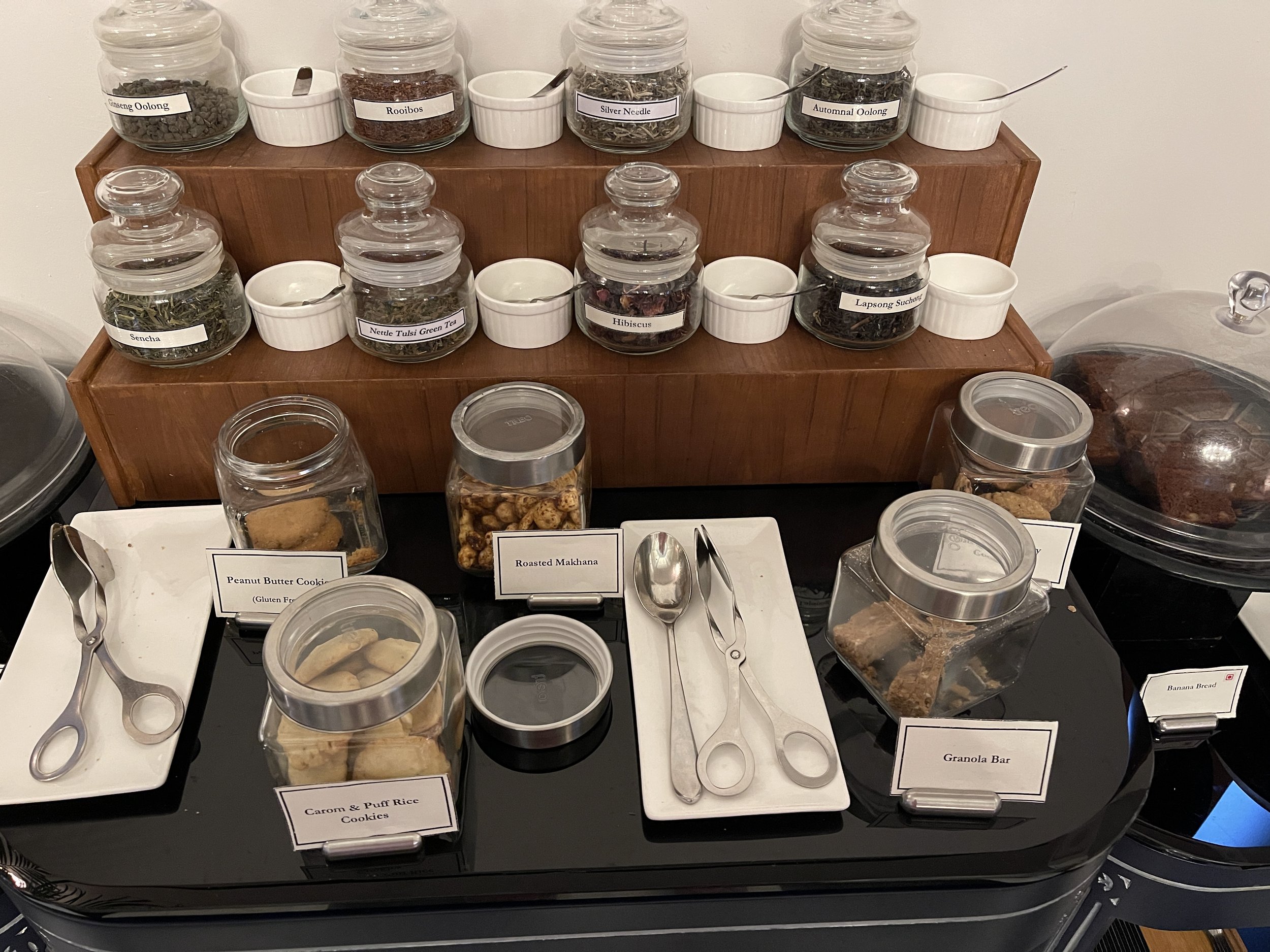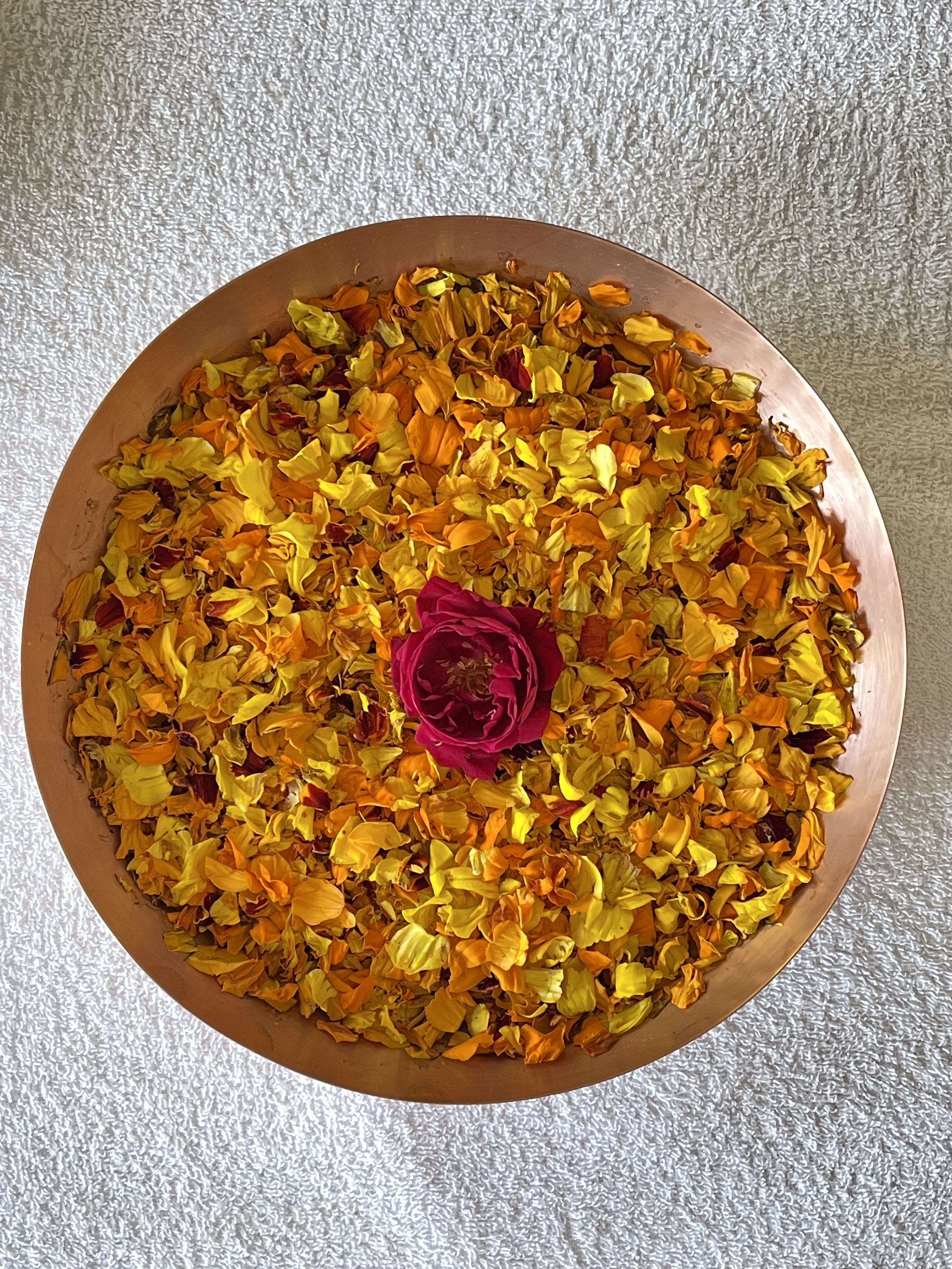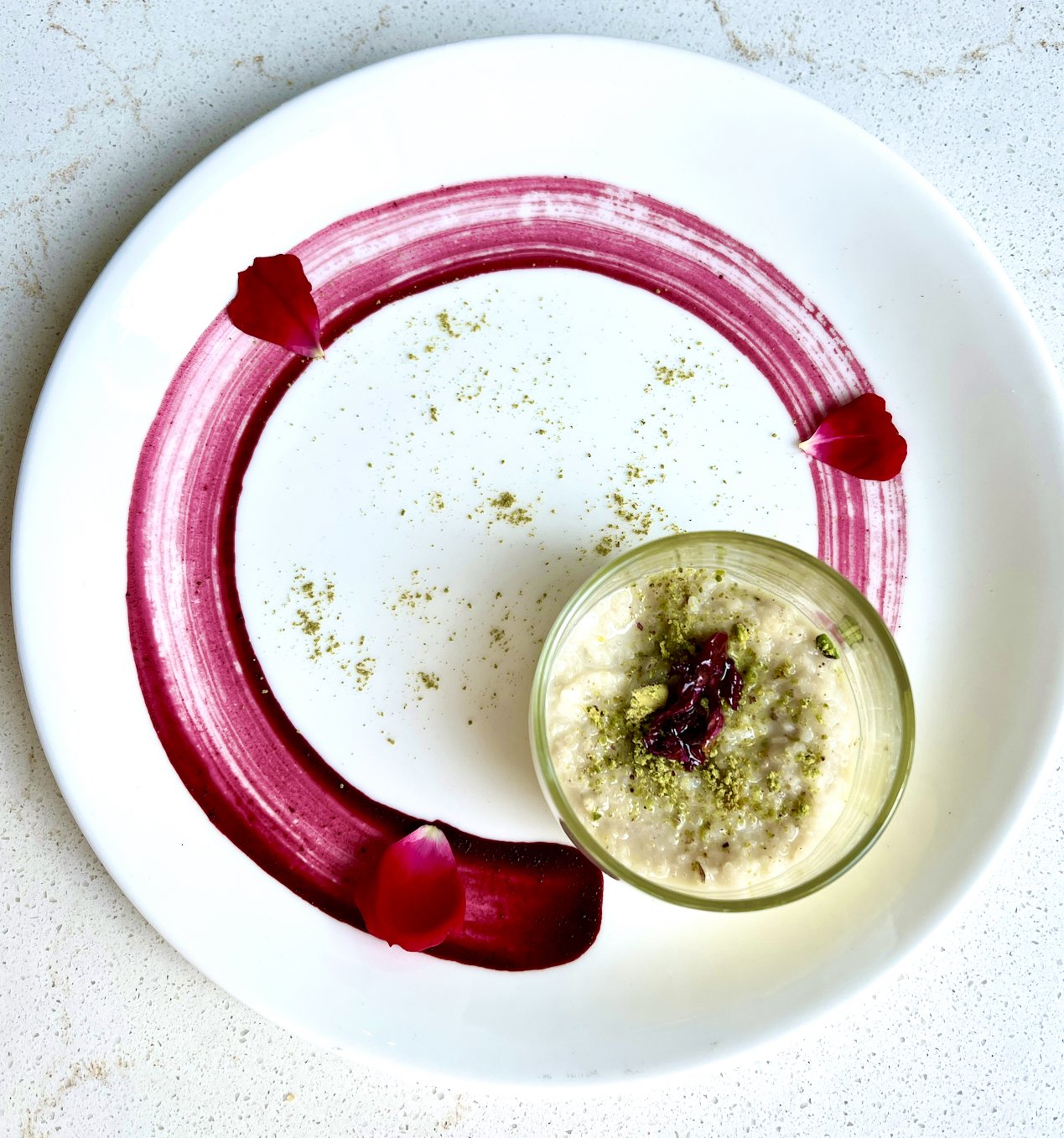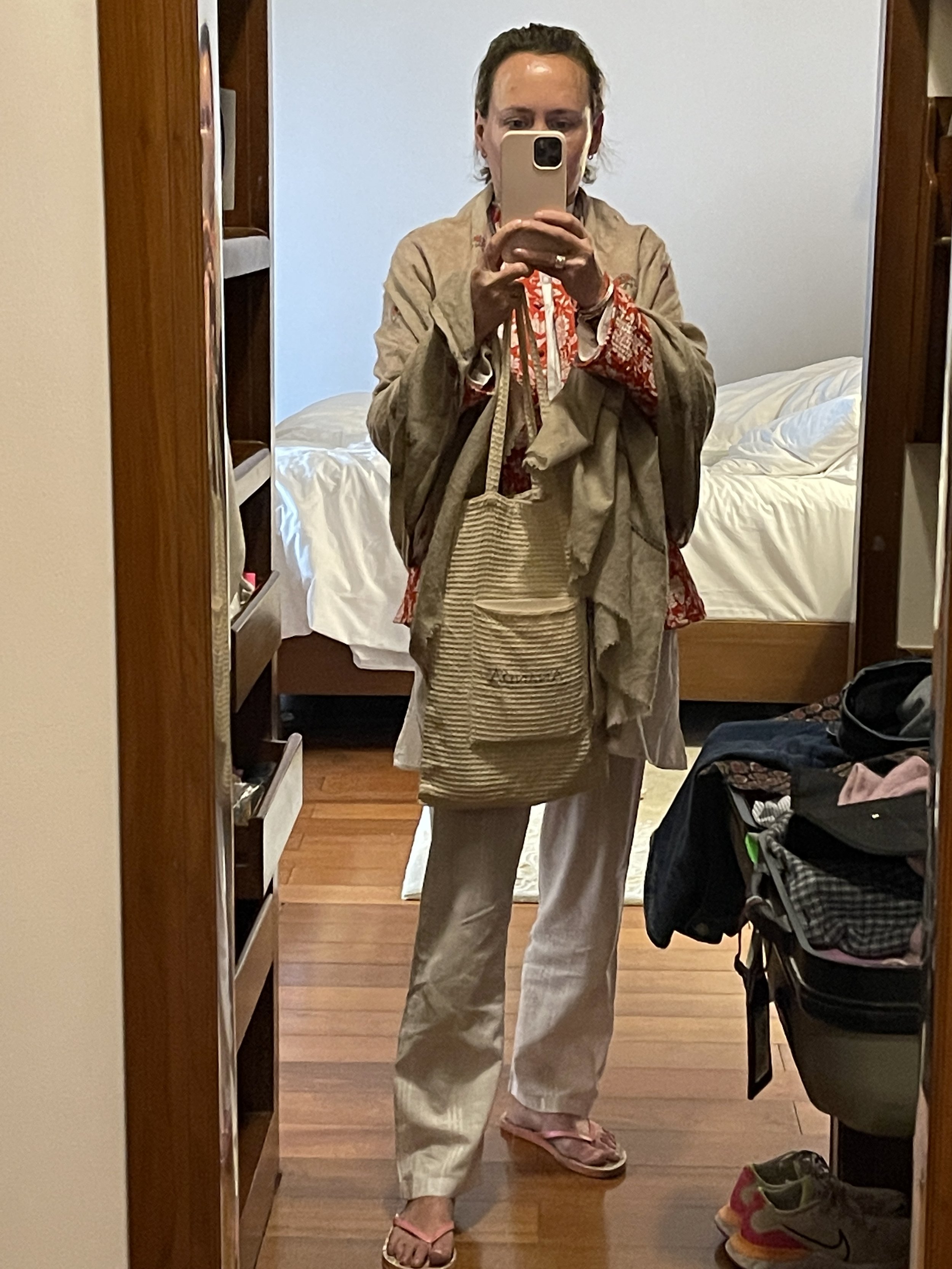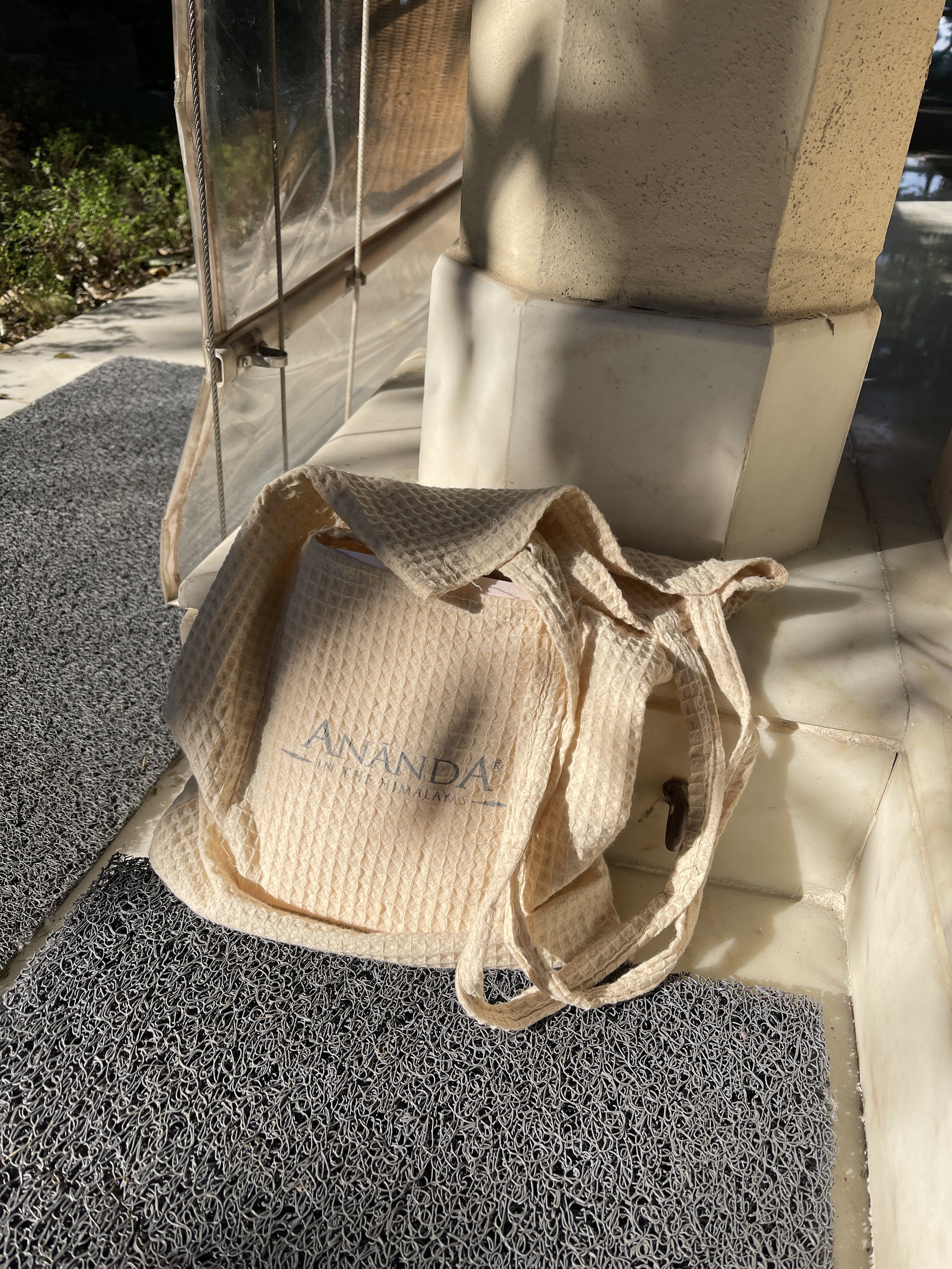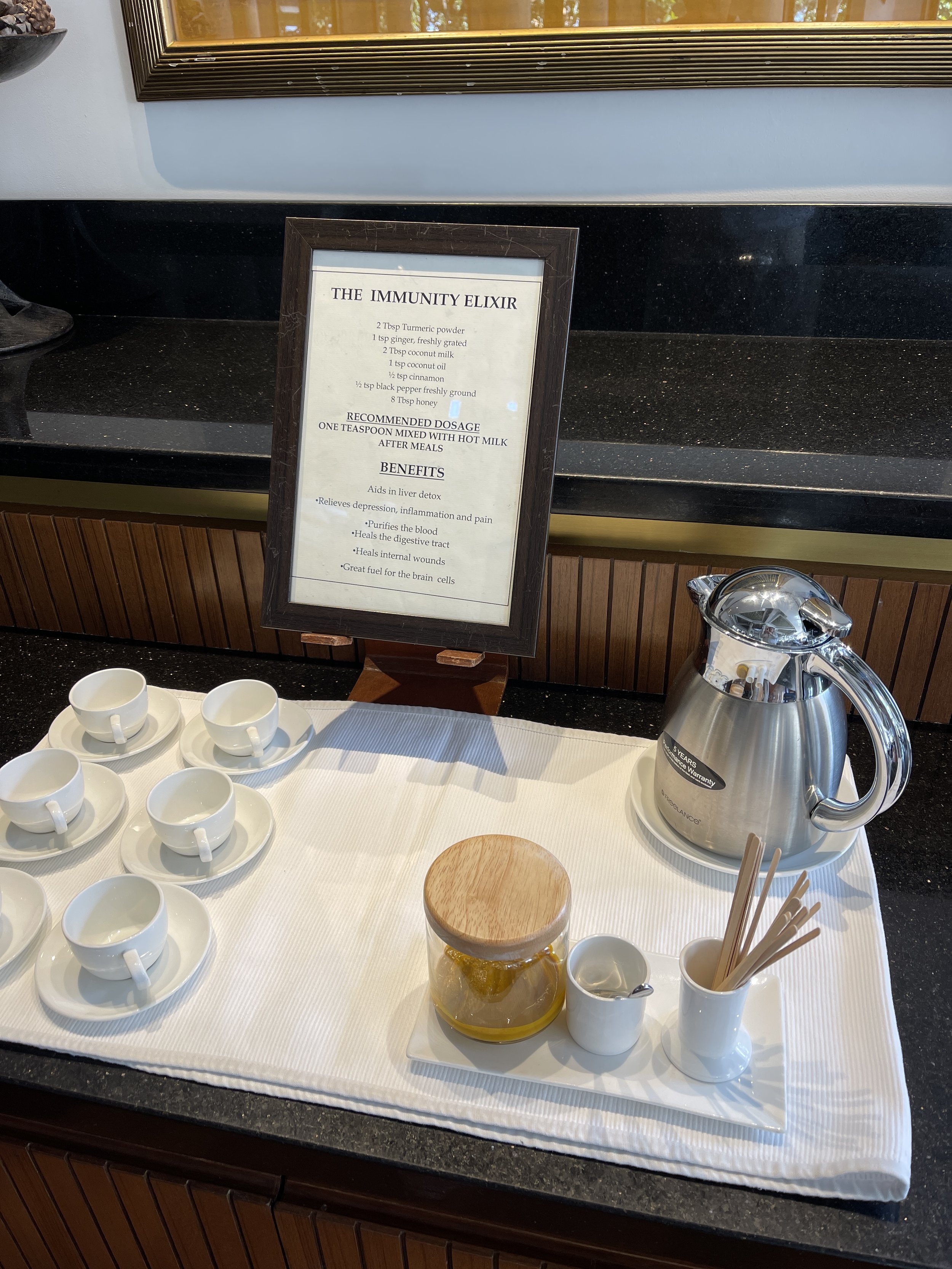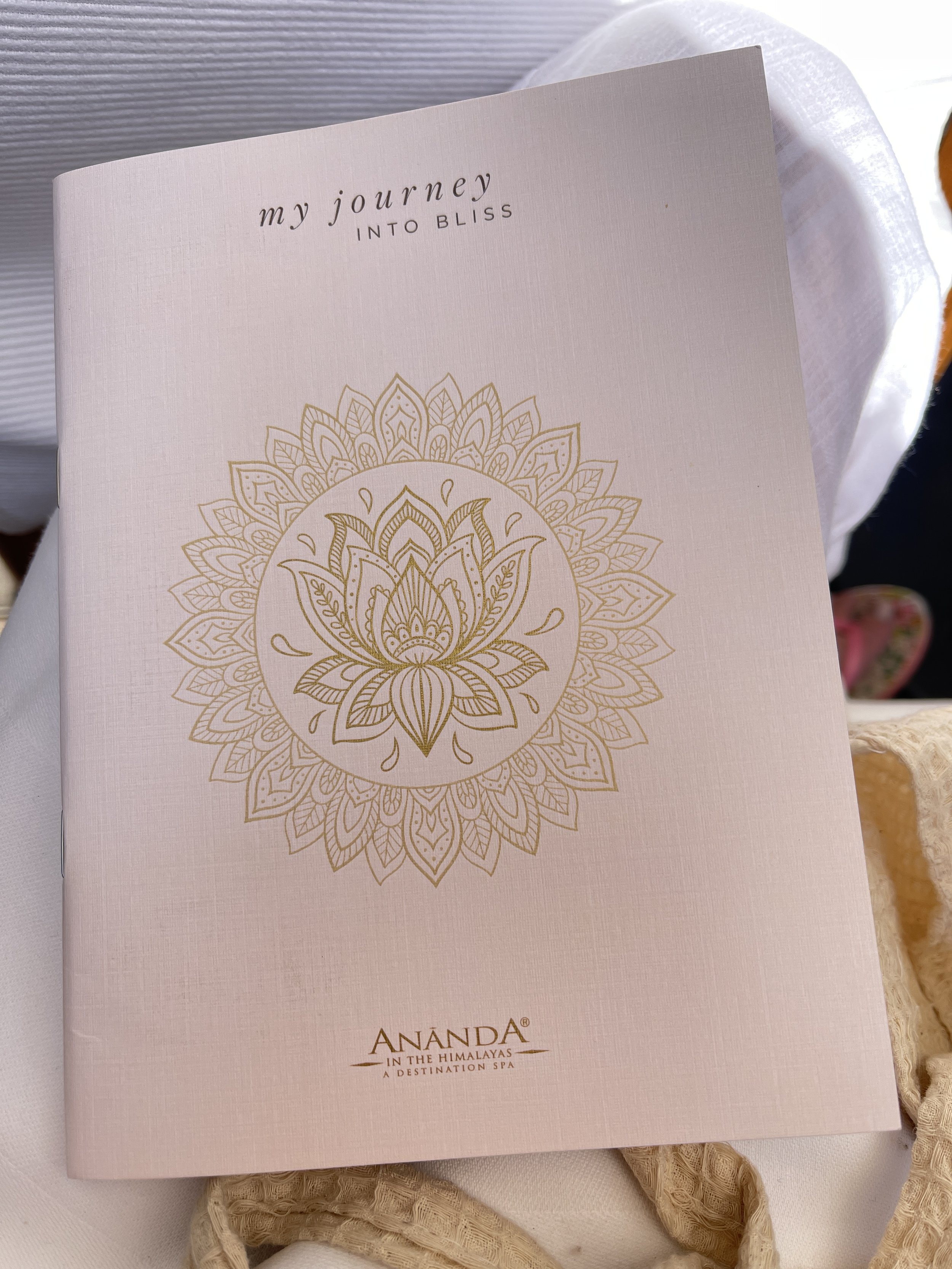Stress Management at Ananda in the Himalayas
A few weeks before my arrival at Ananda in February I filled in an extensive Ayurvedic questionnaire on my health, emotional wellbeing, medical history and eating habits. Within a couple of days of submitting it a Zoom consultation with the Ayurvedic doctor was organised; a great timesaving set-up allowing you to head straight into your programme on day one.
It was a bumpy evening ride from Dehradun airport to Ananda in the Himalayas and I arrived with a heaviness that has engulfed me over the last few years; bereavement from the death of my father, father-in-law and divorce and stress from two house moves. It would be an understatement to say that I arrived sleep deprived and emotionally depleted and my arthritic knees were after some much-needed care and attention. Dinner was being served in the restaurant as I arrived which was buzzing with the chatter of guests who were of varying ages and nationalities, some single, some travelling with friends, and some couples.
Rooms are all (apart from the suite and villas) a short walk from the restaurant and spa. My room was spacious, decorated in soft, neutral colours with a large marble bathroom with a bathtub overlooking the surrounding hills and valley, and a huge shower. Ayurvedic therapies are left in the bathroom for each guest to use during their stay including tongue scraper, nasal oil, foot oil and sesame oil to draw toxins from your mouth. Each night a hot water bottle appeared in my bed, as if by magic, as well as a nightly quote and healthy snack. The other lovely touch at Ananda is that they leave two pairs of white cotton pyjamas (in your size which they have taken from the questionnaire) in your room; very few clothes are needed during your stay here as you float around in these comfy PJ’s most of the day and before you know it, you’ll be heading to the shop to buy a pair, or two or three to take home!
You might want to ask for the TV not to be turned on in your room as this was the only annoying element of my stay; every night on arrival back to my room after turndown the TV was pulled out from the wall and turned on. In fact, I didn’t watch any television at all during my stay. The core values at Ananda are focused on Ayurveda - a natural system of medicine, that originated in India more than 3,000 years ago. The term Ayurveda is derived from the Sanskrit words ayur (life) and Veda (science or knowledge). Based on the results of the questionnaire it didn’t surprise me to learn that I was to be doing the Stress Management programme with a vata menu (my Ayurvedic dosha - dosha is a Sanskrit word that means “fault,” “defect,” translated as body type) – Vata dosha is a combination of the elements of space and air. Doshas are believed to circulate in the body and govern physiological activity, their differing proportions determining the individual character and physical constitution.
Dr. Naresh Perumbuduri, Senior Ayurveda Physician was the Lead consultant on my Stress Management programme. He was born into a traditional Ayurveda family near Hyderabad, India, where the traditional system of healing through Ayurveda was practised by 4 generations of his family before him, unknowingly he spent his childhood assimilating and learning various principles and herbal formulations of Ayurveda.
Dr. Naresh Perumbuduri, Ananda in the Himalayas
Each programme at Ananda has Ayurveda as its foundation and depending on your programme it’s layered with other therapeutic elements which for me included Emotional Healing, Physiotherapy and plenty of massages, Aromatherapy and Reflexology.
Food is always an important part of my experience when travelling and it was very liberating not having to choose what to eat; you’re handed your set menu at breakfast, lunch and supper – there are more than 10 different menus for the programmes at Ananda in addition to the nutrient-rich à la carte menu. For the Vata dosha, the focus is on cooked food which is grounding; the dosha is balanced by a diet of whole foods that are soft in texture, rich in protein and fat, and seasoned with a variety of spices. In addition to my menu, I could help myself to anything at breakfast which was a feast of fresh fruits, juices, smoothies, homemade kombuchas and many gluten-free options including granola and nut bars. Lunch always started with a selection of colourful and nutritious salads with a focus on cooked vegetables before my vata menu was served which included soups, lentil pancakes, congees and lightly curried fish skewers. Supper is a savoury affair with three courses of warming and grounding food followed by a sleep infusion.
Day one was a gentle integration into my programme with yoga, and a meeting with the Ayurvedic doctor. Much to my delight he advised me that I needed to have at least one massage a week on my return home (note to self). Each treatment at Ananda begins with a blessing, foot bath and a ritual and my first was Abhyanga (synchronised massage), also known as the butterfly massage.
Day two started with a group meditation and much as I tried, I couldn’t focus my mind, especially as we were strictly told we weren’t able to move, I blamed that on the magical sound of bagpipes being played somewhere in the grounds, which I found difficult to ignore. Vedanta (ancient Indian spiritual teachings) was next followed by an all-important meeting with chef Arun who took me through the various options for the vata dosha – to balance this body type oily, heavy and moist foods with tones of sweet, sour and salt need to be added to the diet – ‘to eat is a necessity, but to eat intelligently is an art’.
Candle meditation (Trataka) was half an hour of meditating in front of a candle, a practice easily repeated at home; I was encouraged by the teacher who told me it was rare for someone to master it the first time. My wow factor at Ananda was at the end of the day with a session of Reflexology by Krishna. As a qualified Reflexologist (no longer practising), Reflexology is the one treatment I always book whenever possible when travelling. Krishna’s energy flowed through her intuitive hands which danced across every inch of my feet, smoothing out the blockages along the way. Finally, I had found ‘my’ reflexologist; I would almost get on a flight to Ananda just to be treated by her.
By day three I felt drained, irritable, and low; clearly, the detox was stronger than I had realised. I mentioned this and they reassuringly advised me that day three is often the lowest point of any of the programmes and the only way is up!
Bolstered by the delicious vegetables, fresh juices and sleep infusions made with herbs from the garden I was bounding with energy on day four ready to take on the world. However, the ‘evacuation’ that was meant to have taken place by now was long overdue so a quick phone call to Dr Naresh was needed. Apparently, this is very common with a change of diet (even if the change is to a high-fibre one) at Ananda and thankfully it was easily sorted with some Ayurvedic herbs.
Emotional Healing is relatively new at Ananda and was a welcome addition to my programme. I headed into Shikha’s room rather sceptical with a stubbornness to surrender. Resistance was futile, however, and the regression therapy (1.5 hours) was transformational and liberating. Did I cry? Of course, I did! It was just the release I needed to start peeling off the feelings of guilt and grief that had been clinging to my every cell; it was a journey of discovery to meet my younger self. The timetable had been purposely arranged for me to be soothed by Choomaswedana (hot bundle massage) followed by Jhan Vasti (hot knee therapy); the thought and time taken in putting together each bespoke programme is impressive.
Time goes quickly at Ananda, and my last day loomed with a plethora of treats and massages, the perfect ending to a rich and immersive week of self-discovery.
Ananda had given me a first aid kit for life: the grief I felt on arrival had been softened, my arthritis soothed, and my emotions were on an even keel. The week I have been home I have found it easy to integrate what I have learnt into my everyday life. Ananda should not be looked at as a place to diet and lose weight but should instead be seen as ‘a way of life’.
www.theglobalretreatcompany.com

